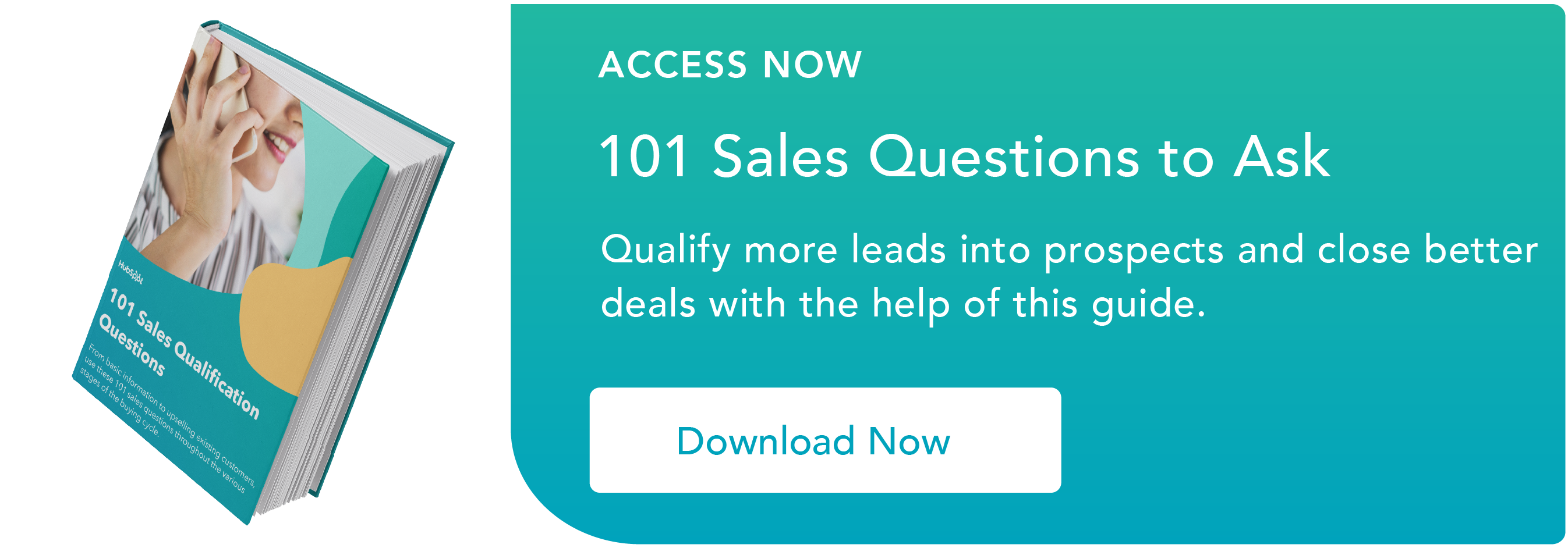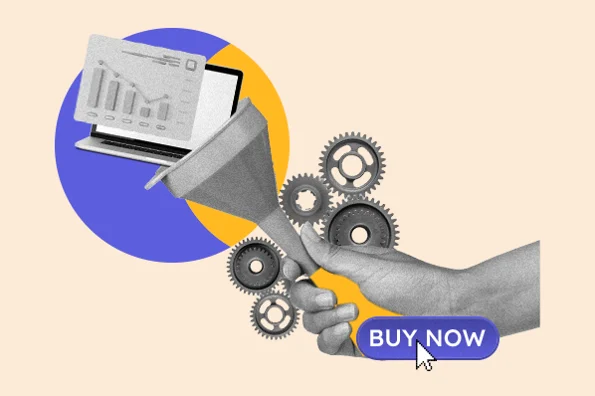After years of leading sales teams, I’ve experienced firsthand how businesses have unique needs and criteria to consider when identifying a sales opportunity. I’ve discovered it’s crucial to identify when a lead converts into an opportunity. This switch impacts your sales process, your ability to qualify, and your alignment with marketing.

However, if your sales and marketing team don’t agree on what an opportunity is and chase leads without a unified set of qualification metrics, you’ll have problems scaling your sales.
In this post, I’ll dig into how to identify a sales opportunity and how to convert a lead into a prospect. Let’s dive in.
Table of Contents
- What is a sales opportunity?
- Lead vs. Prospect
- Prospect vs. Sales Opportunity
- Characteristics All Sales Opportunities Must Share
- Best Practices I Follow to Maximize Sales Opportunities
- Patience Leads to Sales Opportunities
What is a sales opportunity?
After years in the field, I come to my own definition. A sales opportunity is a prospect with a high chance of a sale if you nurture them well. As I touched on earlier, a sales opportunity should have a strong potential to buy. At this stage, that usually means your product or service solves a pain point for them.
However, not all sales opportunities bear fruit. I’ve seen sales reps work with the prospect to move them forward in the sales cycle. They want to create a qualified sales opportunity and start honing in on closing that deal. But in the end, they don’t make a sale.
Why is that? Well, not every opportunity is qualified. They may not be the best fit to benefit from your offering. Which leads to the question…
What is a qualified sales opportunity?
A qualified sales opportunity is a sales opportunity that you’ve vetted to ensure a match to your product or service. It’s the next step into the sales funnel, and they have the funds and authority to make the purchase. You don’t want to waste time chasing an opportunity that can never become a paying customer.
One of the first things I discovered when heading a sales team was that most new salespeople had no idea how “sales opportunity,” “qualified,” “lead,” and “prospect” differed. They would often use the terms interchangeably, which led to confusion and lost sales.
B2B ecommerce sales already have slim conversion rates of 1.8% to 2.7%, so you can’t afford extra hurdles to jump.
I found each rep used their own judgment and bias to qualify sales opportunities, so I consistently had to filter out warm but unqualified leads from the company’s CRM. That inconsistency damages accuracy in projecting revenue. I find it vital to define clear sales process stages to ensure deals are being categorized correctly.
To help, let’s dive into definitions.
Lead vs. Prospect
A lead is the initial contact phase of your sales funnel. It might be a cold phone call (outbound) to a name on a company's website in your target audience, a contact from an information request form, or someone who downloaded an ebook from your website (inbound). A lead can even come from a random meeting at a convention.
I consider someone a lead if they have expressed some form of interest in the company’s offering or they have a reason to be interested.
A prospect, on the other hand, is someone I’ve gathered more information on and compared to our ideal buyer persona. I know the type and size of their company, their position, and hopefully, their pain points.
I find it works best to sort prospects from leads to find a sales opportunity.
How I Turn a Lead Into a Prospect
The process of converting a lead into a prospect is simple in theory but nuanced in practice.

I start my lead conversion workflow by walking every lead through my company’s sales qualification process. That helps me match our offerings to the lead’s needs and resources. If they don’t match, I don’t move them forward. That can lead to wasted resources.
Next, I refine the remaining leads with my three-step qualification process.
Organization
Does the size of the organization and its resources fit our target? Is the lead in the right industry? If I’m targeting individuals, does the lead meet our demographics? At this stage, I gather and verify potential customer data.
Opportunity
Even if a lead is a perfect match for our buyer persona, they don’t become a prospect if they don’t need our product. Over the years, I’ve found that if there’s no pain point to solve, there’s no opportunity.
Stakeholder
Ideally, I only want leads that have the decision-making authority at their company. If the lead doesn’t have the authority to make a final purchasing decision, I identify who does before continuing through the stages of the sales process.
Georg Roch, the CEO of FILMFLUT, a film and media production company, talks about the importance of identifying all of the decision-makers.
“When multiple stakeholders from the potential client's side begin discussing our solution internally, it significantly propels the decision-making process forward,” Roch says.
Remember, your leads might also be exploring competitor products and may as well be moving further in their conversion process.
Prospect vs. Sales Opportunity
When I move a lead to a prospect, we gather more information and start to get a feel for whether or not they are an actual opportunity for a sale.
I’ve seen many sales experts use the BANT (Budget, Authority, Needs, Timeline) criteria for this. However, in my opinion, over-reliance on these criteria can lead to missed sales.
If my prospect has a budget in place and a 30-day timeline to buy the product, she’s already far down the sales pipeline with around an 80% chance of conversion. This is a late-stage sales opportunity that could score highly on BANT, but I also want first-stage opportunities that might only come with a 10% to 15% win rate.
These might not be BANT stars, but they can still be valuable customers and may come with less competition for the sale if everyone else is ignoring them, thanks to BANT.
Dmitriy Bobriakov, marketing manager at RealEstateU, an online real estate school, explains that when he was working with a SaaS platform startup, he found that focusing on BANT wasn’t a great strategy for closing deals.
Their sales reps were trained to ask about the budget in the first call, discuss needs in the second call, and try to close deals by call three, Bobriakov says. But this aggressive approach backfired - prospects felt pressured, and sales struggled.
“Lead with value, build relationships, and then assess BANT when the timing is right. This ultimately leads to more sales success,” Bobriakov says.
Characteristics All Sales Opportunities Must Share

While BANT can be useful, at the most fundamental level, I believe all sales opportunities should share three traits. Start with these, and then add criteria particular to your company.
1. Pain
A sales opportunity needs to have a reason to buy your product. What problem can you solve for them? How can you make their life easier?
Many prospects I talk to don’t explicitly tell me their pain point at first. However, there are usually clues that help me identify the customer's pain points.
For example, I pay attention to how they reached us as a lead. If they downloaded our “Top 10 Marketing Tools for 2024” ebook, it makes a great starting point when I talk to them. I can use the information to craft specific questions and pull the pain point out of the prospect.
2. Interest
The next thing I look for is interest. It’s not enough for them to have a pain point. They also have to want to solve it before I can consider them a sales opportunity.
I’ve found that some qualified prospects aren’t aware of their problem but are open to solving it once it’s pointed out. For example, prospects are often unaware that they don’t have to manually move information from one software to another and can use software to automatically connect systems.
However, some have been aware of their pain point for years, have found a workaround for their existing issues, and aren’t interested in a different solution.
In my opinion, it’s better to walk away from sales prospects who aren’t interested in a solution and instead focus on those who are ready to listen.
3. Fit
Even if my product solves a pain point and they are interested, my company’s products might not be the right fit. If their company is a small business with three employees, and my product is made for businesses with 100+ employees, it is not a good sales opportunity.
They're not the right fit for my product. Say I could convince a small company to make a huge purchase that saves money on logistics. However, the purchase costs more than the savings it offers. If I ignore the customer’s needs and go through with a sale, it’s highly likely that I’ll create an unhappy customer who might influence other prospective customers.
By missing this bad fit opportunity, I’m protecting my brand image and maintaining good word of mouth — both of which are worth far more than a single sale.
Best Practices I Follow to Maximize Sales Opportunities

Pain, interest, and fit are my three criteria for upgrading prospects to sales opportunities. Once I have those sales opportunities, I need best practices to close those potential sales.
Build genuine connections.
It’s easy to pick out lead names and automate your sales process using templates and tools like CRM software. However, building a personal rapport with your prospects helps build solid connections that you can use to upsell or cross-sell later.
I’ve found that adding a personal touch to each step of the sales process helps build a stronger customer relationship. Sometimes, that’s identifying a lead’s unique needs. Sometimes, it’s me remembering that, in our initial conversation, they mentioned their daughter was cramming for finals, so I ask how she did.
Gauri Manglik, CEO of Instrumentl, says that establishing a personal connection early is crucial.
“I make it a point to ask questions about their background, interests, and pain points to understand their unique situation. This shows you're genuinely invested in them as an individual, not just seeing them as a number,” Manglik says.
Don’t waste their time.
According to a 2024 HubSpot report, 28% of prospects back off due to a lengthy sales process. A successful sales process takes little of the sales lead’s time while being as detailed as possible on your end.
I maintain a balance in this process by closing sales-qualified leads as quickly as possible without making them feel rushed. Part of that is knowing what they need.
Philip Stanley, media manager at Venture Smarter, highlights the importance of understanding the needs of your potential customers.
“It’s not enough to just know who the lead is; we need to understand their unique needs and challenges. This means going beyond the basic demographic information and diving into their business operations, goals, and pain points,” Stanley says.
Find your champion.
Even when there are multiple stakeholders and decision-makers, I find it is important for me to build a connection with one person who is an advocate for my product internally.
Mark Osborne, founder of growth firm Modern Revenue Strategies, calls this person your “champion.” This person on the buying committee will actively sell the rest of the stakeholders on the value of the project and advocate for your offering, putting their own reputation on the line.
This internal referral from a champion gives me an internal advantage over competitors who don’t take the time to make that connection.
Patience Leads to Sales Opportunities
One piece of advice I love sharing with all my sales reps is to have patience when qualifying prospects. Disqualifying leads too early in the process or based on the wrong criteria leads to missed sales opportunities.
Following my steps for moving leads, prospects, and sales opportunities through the sales funnel helps keep your team on the same page and on track for more conversions.
Editor's note: This post was originally published in January 2020 and has been updated for comprehensiveness.
![Free Download: 101 Sales Qualification Questions [Access Now]](https://no-cache.hubspot.com/cta/default/53/e97d6603-b40e-4085-ad55-0074b7351ead.png)










